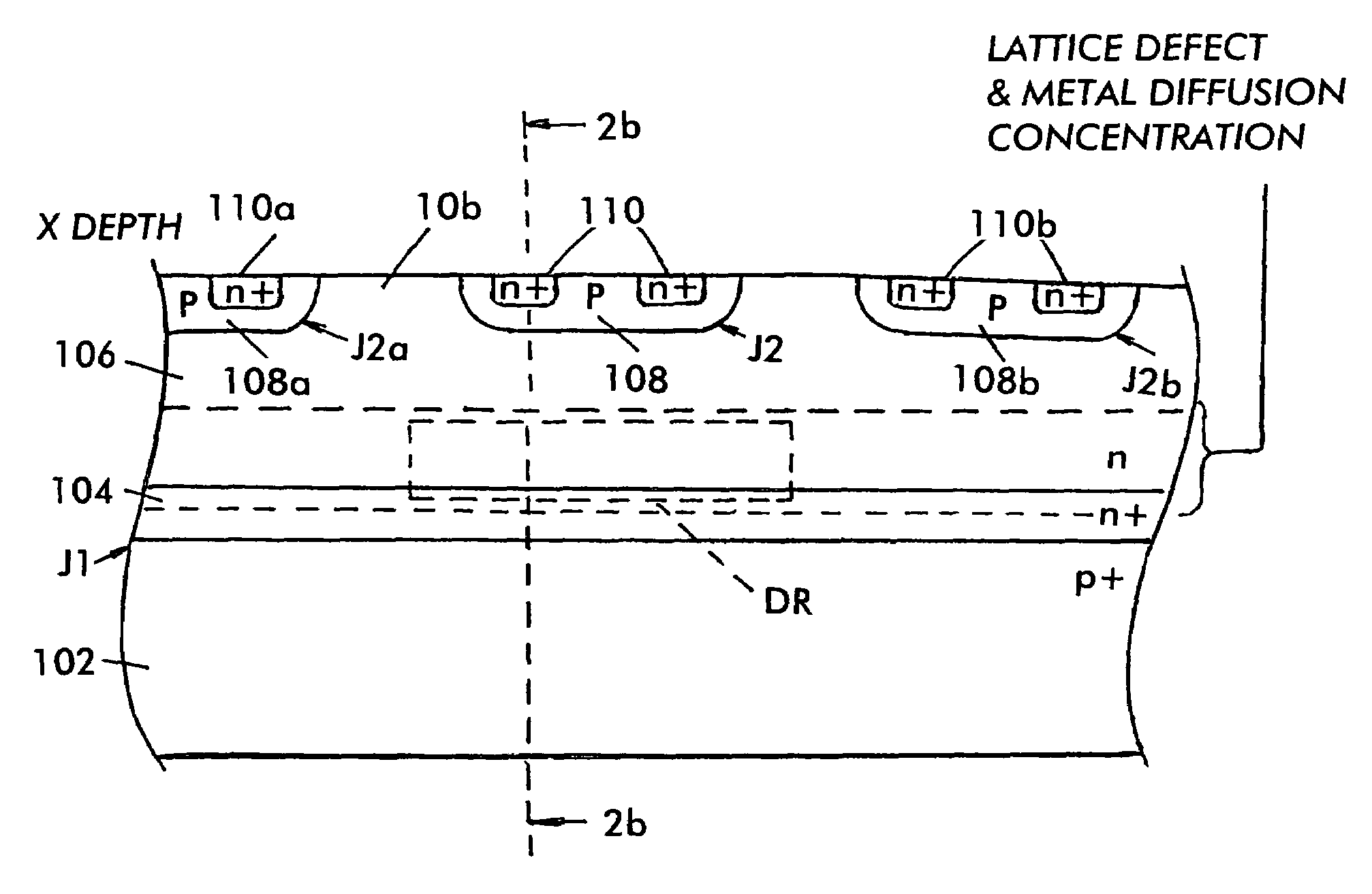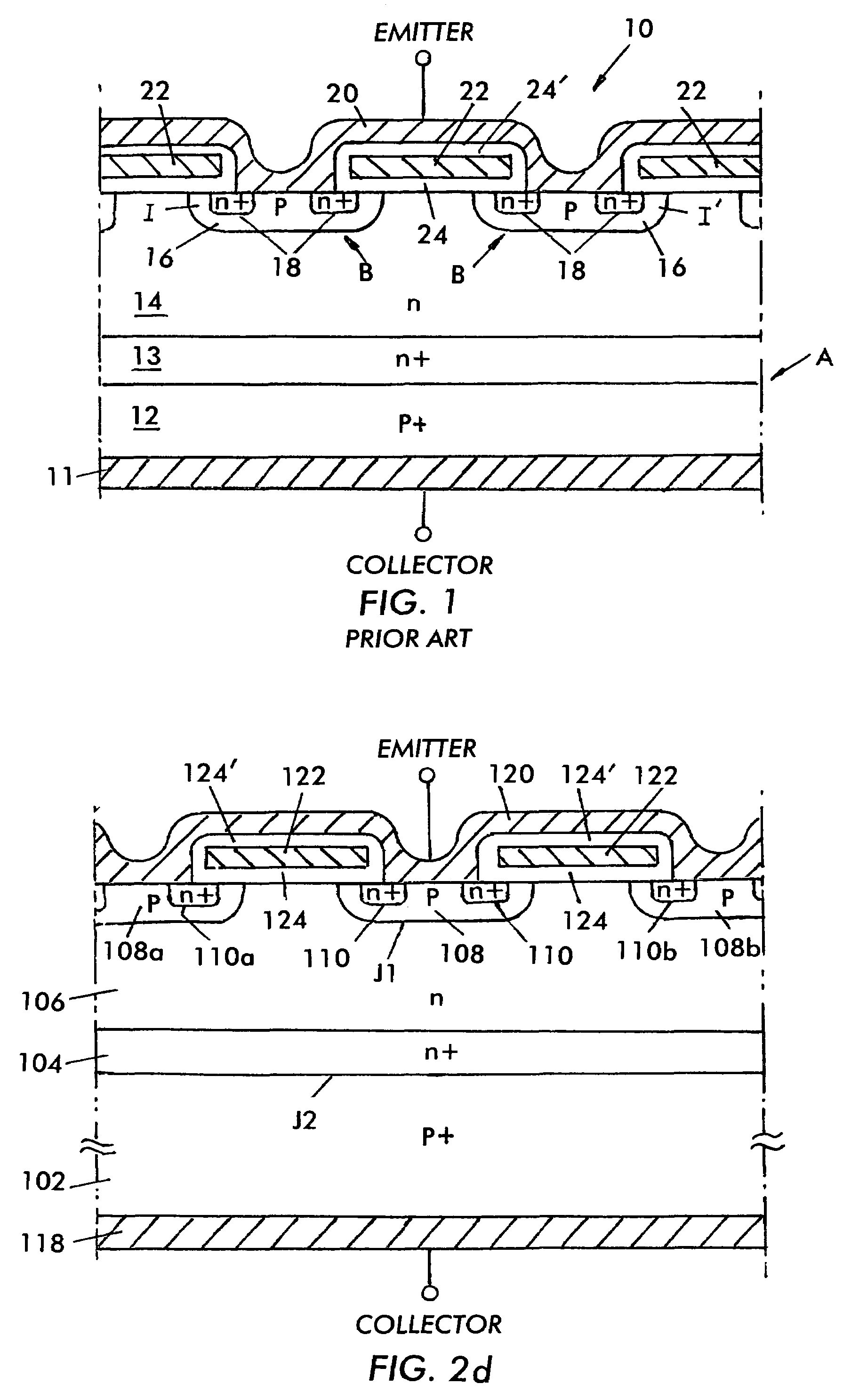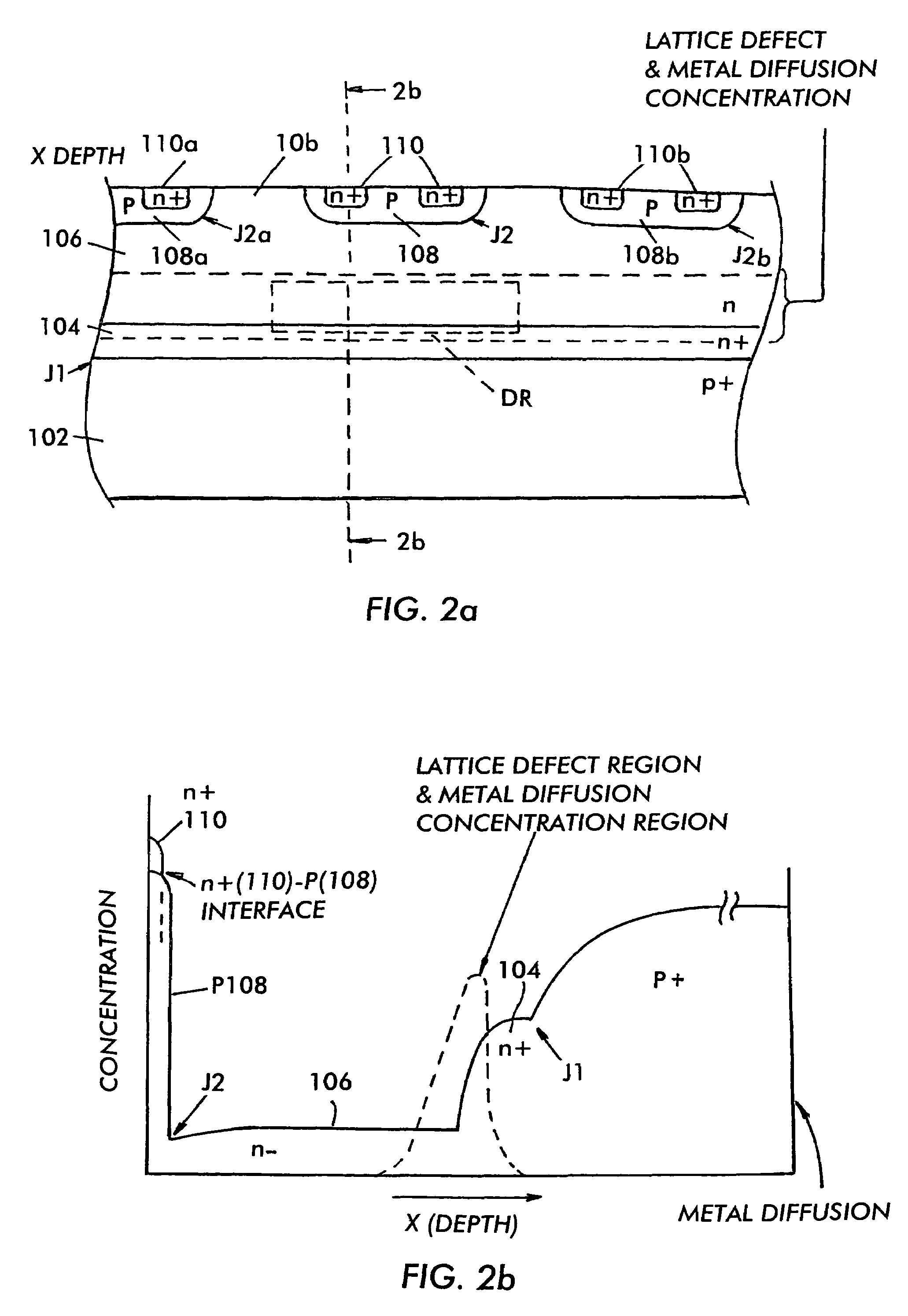Process to create buried heavy metal at selected depth
a heavy metal and depth technology, applied in the direction of semiconductor devices, electrical devices, transistors, etc., can solve the problems of reducing the effectiveness of lifetime killing, annealing out of silicon damage created by low doses of particle beam implants, adversely affecting other important operational parameters of the device, etc., to achieve the effect of reducing the carrier lifetime of the semiconductor devi
- Summary
- Abstract
- Description
- Claims
- Application Information
AI Technical Summary
Benefits of technology
Problems solved by technology
Method used
Image
Examples
example 1
[0044]An IGBT rated for 1200V having structure as depicted in FIG. 2a and having the relative concentrations shown in FIG. 2b is constructed with the following widths:[0045]p+ substrate (102) approx. 375 microns[0046]n+ layer (104) approx. 12 microns[0047]n layer (106) approx. 100 microns[0048]p diffusion region (108) approx. 4-5 microns[0049]n+ diffusion region (110) approx. 0.3 microns
[0050]The structure is subjected to a particle beam implant of helium or hydrogen atoms through the back surface of the wafer using known techniques, dosages and energy to attain an implant profile of the concentration and position shown in FIG. 2b. The beam is applied homogeneously across the surface. The implant creates a lattice defect region across the device at the interface of n layer 106 and n+ layer 104 (i.e., peak concentration of the lattice defect region at a nominal depth of 100 microns).
[0051]The device is then subjected to metal diffusion, for example, gold, palladium or platinum, throu...
example 2
[0060]A fast recovery diode rated for 600V having structure as depicted in FIG. 3a and having the relative concentrations shown in FIG. 3b is constructed with the following widths:[0061]n+ region (202) approx. 250 microns[0062]n− region (204) approx. 60 microns[0063]p+ region (206) approx. 6 microns
[0064]Before fabrication of the anode electrode 212 and cathode electrode 210 shown in FIG. 3a, the device is subjected to a particle beam implant of helium atoms with a dose of from 5×1013 atoms / cm2 to 1×1015 atoms per cm2 using known techniques and appropriate energy to attain an implant profile of the concentration and position shown in FIG. 3b. The beam is applied homogeneously across the surface. This creates a lattice defect region across the device at a nominal depth Y (for the peak concentration of helium atoms) of 25 microns and a lateral width of about 15 microns.
[0065]The device is then subjected to metal diffusion. Platinum is diffused into lower n+ region at a temperature of ...
example 3
[0067]A fast recovery diode rated for 600V having structure as depicted in FIG. 3a and having the relative concentrations shown in FIG. 3b is constructed with the following widths:[0068]n+ region (202) approx. 250 microns[0069]n− region (204) approx. 60 microns[0070]p+ region (206) approx. 6 microns
[0071]Before fabrication of the anode electrode 212 and cathode electrode 210 shown in FIG. 3a, the device is subjected to a particle beam implant of helium atoms with a dosage of approximately 1×1012 to 1×1015 atoms / cm2 using known tecniques and appropriate energy to attain an implant profile having the desired concentration and position. The beam is applied homogeneously across the surface. This creates a lattice defect region across the device at a nominal depth Y (for the peak concentration of helium atoms).
[0072]The device is then subjected to metal diffusion. Platinum is diffused into lower n+ region at a temperature of 600 to 1000° C. for 10 to 30 minutes. Again, the exact temperat...
PUM
 Login to View More
Login to View More Abstract
Description
Claims
Application Information
 Login to View More
Login to View More - R&D
- Intellectual Property
- Life Sciences
- Materials
- Tech Scout
- Unparalleled Data Quality
- Higher Quality Content
- 60% Fewer Hallucinations
Browse by: Latest US Patents, China's latest patents, Technical Efficacy Thesaurus, Application Domain, Technology Topic, Popular Technical Reports.
© 2025 PatSnap. All rights reserved.Legal|Privacy policy|Modern Slavery Act Transparency Statement|Sitemap|About US| Contact US: help@patsnap.com



